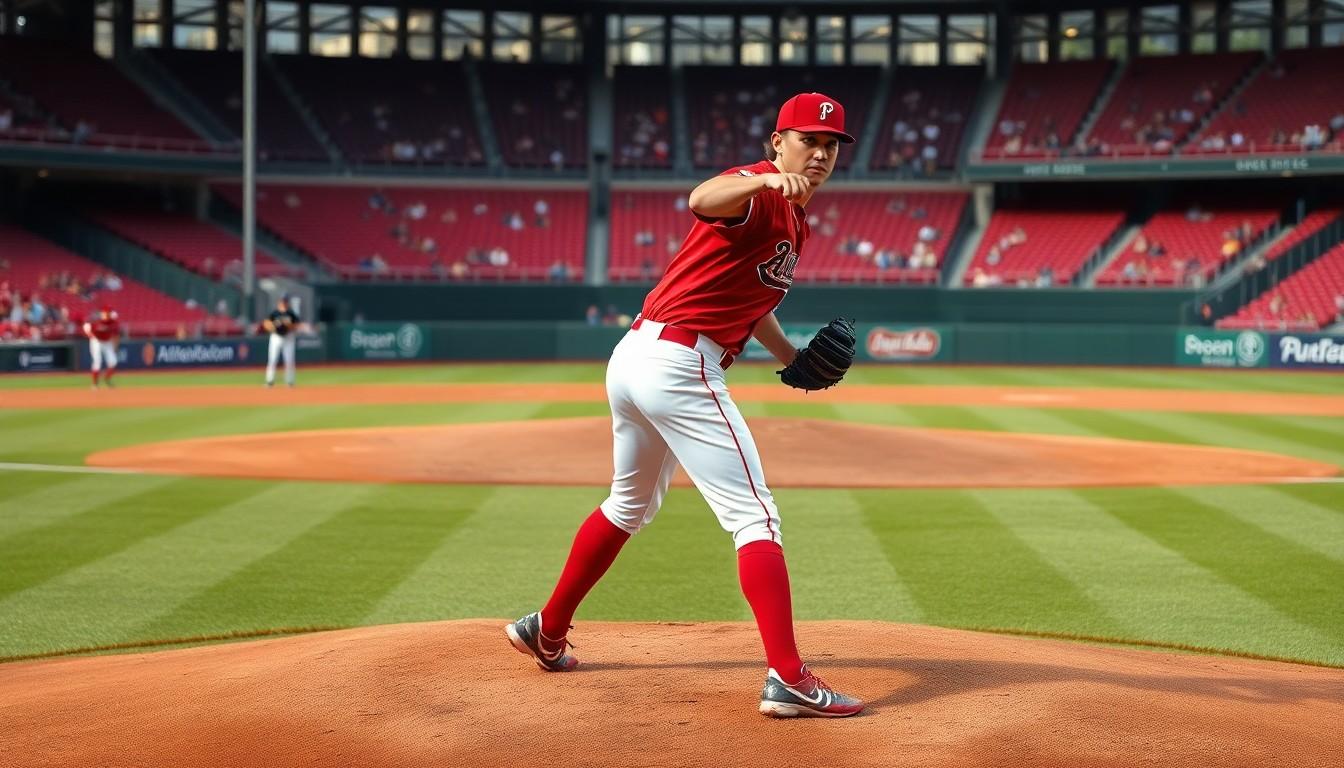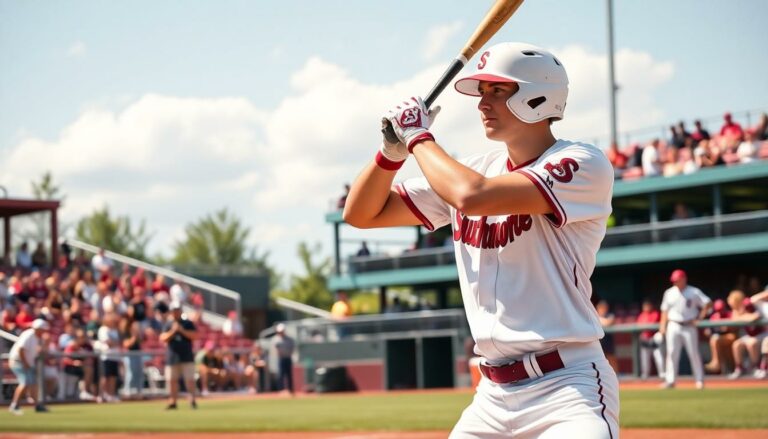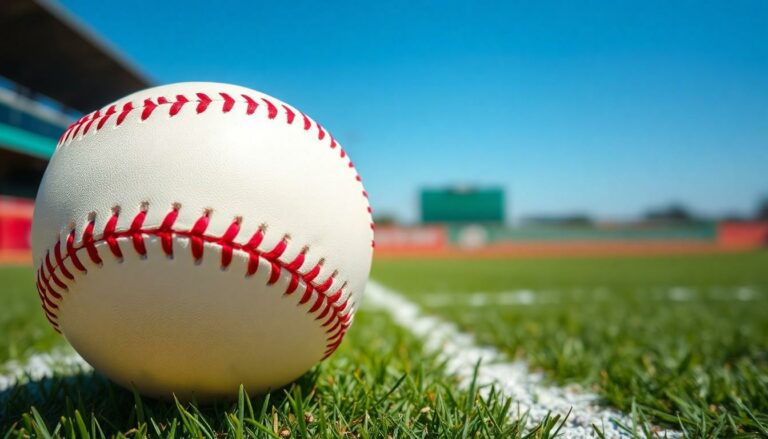
Baseball Pitch Types: Unlock the Secrets Behind Every Pitch for Game-Changing Strategy
In the world of baseball, the pitcher’s mound is where magic happens, and the type of pitch can turn an ordinary game into an unforgettable showdown. From fastballs that zoom by like a cheetah on roller skates to curveballs that dance like they’re auditioning for “Dancing with the Stars,” understanding pitch types is crucial for players and fans alike.
Why settle for a boring fastball when you can dazzle the crowd with a wicked slider or a sneaky changeup? Each pitch has its own personality, and learning about them can make anyone a more informed fan—or even a better player. So grab your glove and settle in as we dive into the fascinating world of baseball pitch types, where every throw tells a story and every game is a chance for a new legend to unfold.
Baseball Pitch Types
Baseball features a diverse array of pitch types that contribute significantly to the game’s dynamics. Understanding these pitches enhances players’ performance and engages fans further.
Importance Of Pitch Types In Baseball
Pitch types play a crucial role in the strategy of the game. Each throw affects the batter’s response and can shift the momentum in a match. Fastballs, curveballs, and sliders each bring varied speed, movement, and deception. Mastering different pitch types allows pitchers to outsmart hitters and navigate through lineups effectively. Fans appreciate the intricacies that each pitch adds to a game, creating tension and excitement. Recognizing the importance of these variations deepens the appreciation for pitching artistry and can lead to improved skills on the field.
General Classification Of Pitches
Pitches can be classified into two primary categories: fastballs and off-speed pitches. Fastballs include varieties such as four-seam and two-seam fastballs, known for their power and speed. Off-speed pitches, like curveballs and changeups, focus on finesse and trickery, making them harder for batters to predict. Each category serves distinct purposes, allowing pitchers to create effective strategies against opposing hitters. Understanding these classifications aids players in honing their pitching skills and prepares them for different game situations.
Fastballs

Fastballs represent the most fundamental pitch type in baseball, showcasing speed and power. These pitches form the backbone of a pitcher’s arsenal.
Types Of Fastballs
Four distinct categories of fastballs stand out. The four-seam fastball delivers maximum velocity and straight trajectory, making it a favorite among pitchers. The two-seam fastball offers subtle movement, often inducing ground balls. Cut fastballs, or cutters, feature late break, targeting the outer edge of the strike zone to confuse hitters. Finally, the sinker stands out by dropping sharply, making it challenging for batters to elevate the ball. Each type serves a specific purpose based on game situation and pitcher strategy.
Pitching Techniques For Fastballs
Proficient execution of fastballs demands mastery of several techniques. Grip influences speed; a firm hold on the ball leads to greater velocity. Release point plays a critical role; higher release points add bulk to the pitch, while lower ones can deceive batters. Body mechanics enhance velocity; using legs and hips for power generates a stronger stride toward home plate. Consistent follow-through helps maintain accuracy and minimizes injury risk. Each element contributes to the effectiveness of the fastball in a competitive environment.
Breaking Pitches
Breaking pitches create movement that complicates the batter’s job. Key types include curveballs, sliders, and other variations that enhance a pitcher’s strategy.
Curveballs
Curveballs consist of a significant downward break, making them difficult to track. Typically thrown with a specific grip, pitchers apply pressure to spin the ball. This unique movement often disrupts timing, resulting in swinging strikes or poor contact. Classic examples of effective curveball pitchers include Sandy Koufax and Clayton Kershaw. Mastery of the curveball requires practice and precision, focusing on grip, wrist action, and release point.
Slider
Sliders combine speed and movement, offering a sharp horizontal break. Typically thrown faster than curveballs, sliders can trick batters into swinging early or missing altogether. The grip involves holding the ball with the index and middle fingers close together. Effective use of the slider can create essential strikeouts and elevate a pitcher’s performance. Pitchers like Mariano Rivera and Greg Maddux perfected their sliders for maximum impact.
Other Breaking Pitches
Other breaking pitches include the knuckleball and split-finger fastball. Knuckleballs feature unpredictable movement that baffles hitters due to their lack of spin. Split-finger fastballs drop sharply, resembling a fastball before diving downwards. These pitches present additional challenges for hitters, often leading to strikeouts or ground balls. Teams often utilize these pitches strategically to keep opposing batters off balance, contributing to a dynamic game environment.
Offspeed Pitches
Offspeed pitches play a critical role in a pitcher’s strategy, allowing for deception and variation in speed. These pitches often confuse batters, adding depth to a pitcher’s arsenal.
Changeup
Changeups reduce speed to disrupt a batter’s timing. Typically thrown about 10-15 mph slower than a fastball, it tricks hitters expecting a power pitch. A well-executed changeup features a similar grip and arm motion to a fastball, making the transition seamless. Notable pitchers like Pedro Martinez demonstrated mastery of this pitch, often resulting in weak contact or swings and misses.
Splitter
Splitters generate unique downward movement. Thrown with a grip that separates the index and middle fingers, this pitch mimics a fastball before dropping sharply as it reaches the plate. Batters find it challenging to connect due to its late break and speed, usually within the range of 5-10 mph slower than a fastball. Successful users like Roy Halladay used splitters to secure countless strikeouts, showcasing the pitch’s effectiveness in high-pressure situations.
Knuckleball
Knuckleballs present a baffling option, exhibiting unpredictable movement. Thrown with minimal spin, this pitch results in erratic trajectories, making it difficult for batters to determine its path. Knuckleball pitchers, such as Phil Niekro and R.A. Dickey, have made a name for themselves by maintaining control over this elusive pitch. Its unique characteristics often lead to swings and misses, forcing batters to adjust their approach significantly.
Fan Experience
Understanding baseball pitch types enriches both the player and fan experience. Each pitch carries its own strategy and purpose influencing the game’s outcome. Mastery of fastballs and breaking pitches can elevate a pitcher’s performance while keeping batters guessing. Off-speed pitches add an extra layer of complexity requiring batters to constantly adapt.
As players refine their skills with these various pitches they not only enhance their game but also contribute to the excitement that makes baseball so captivating. Embracing the nuances of pitching can lead to greater appreciation for the sport and its intricate strategies.



